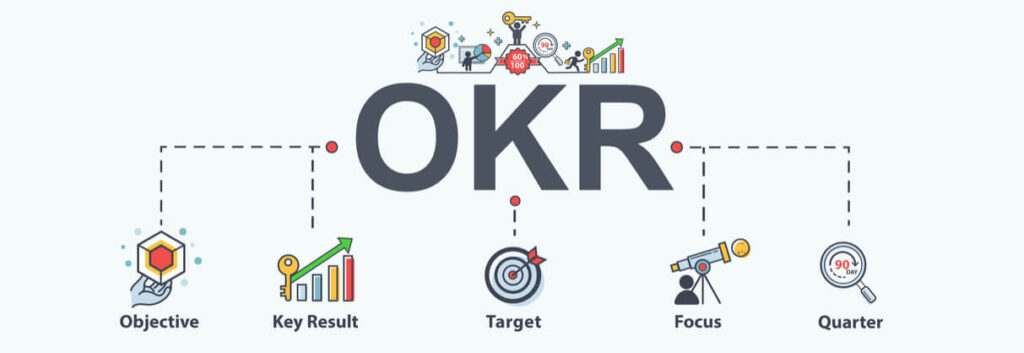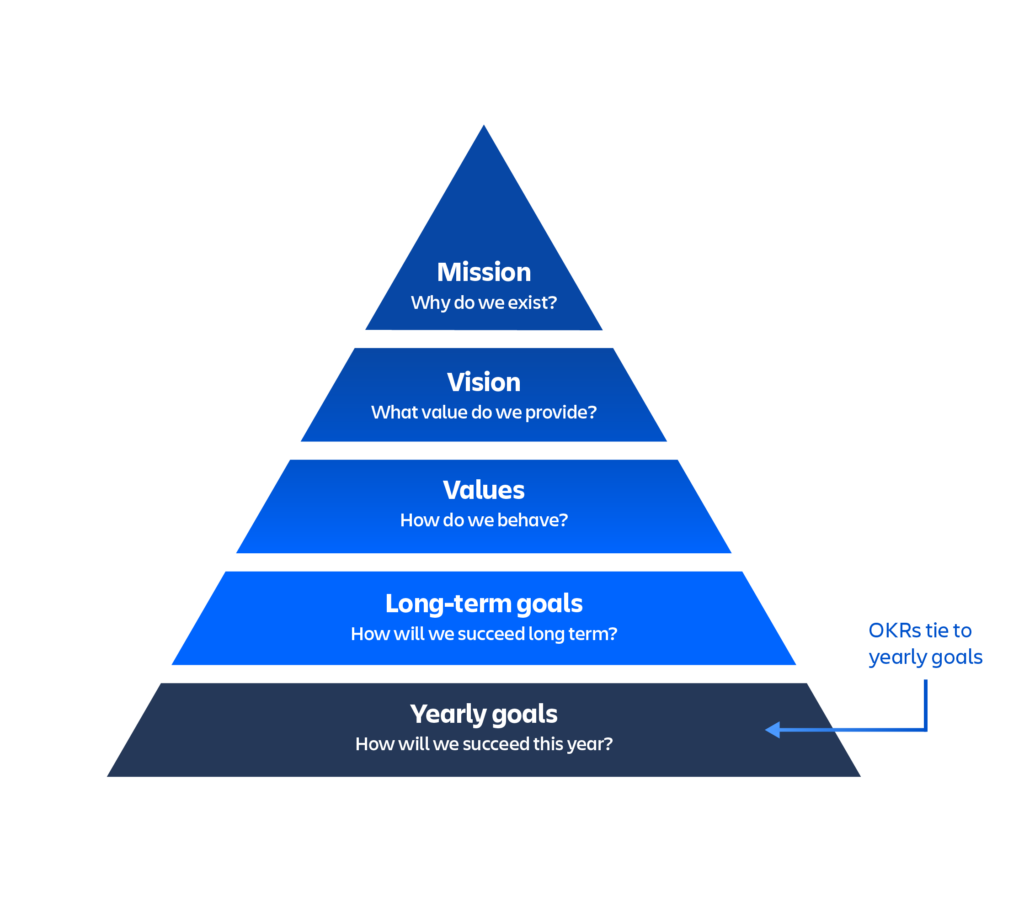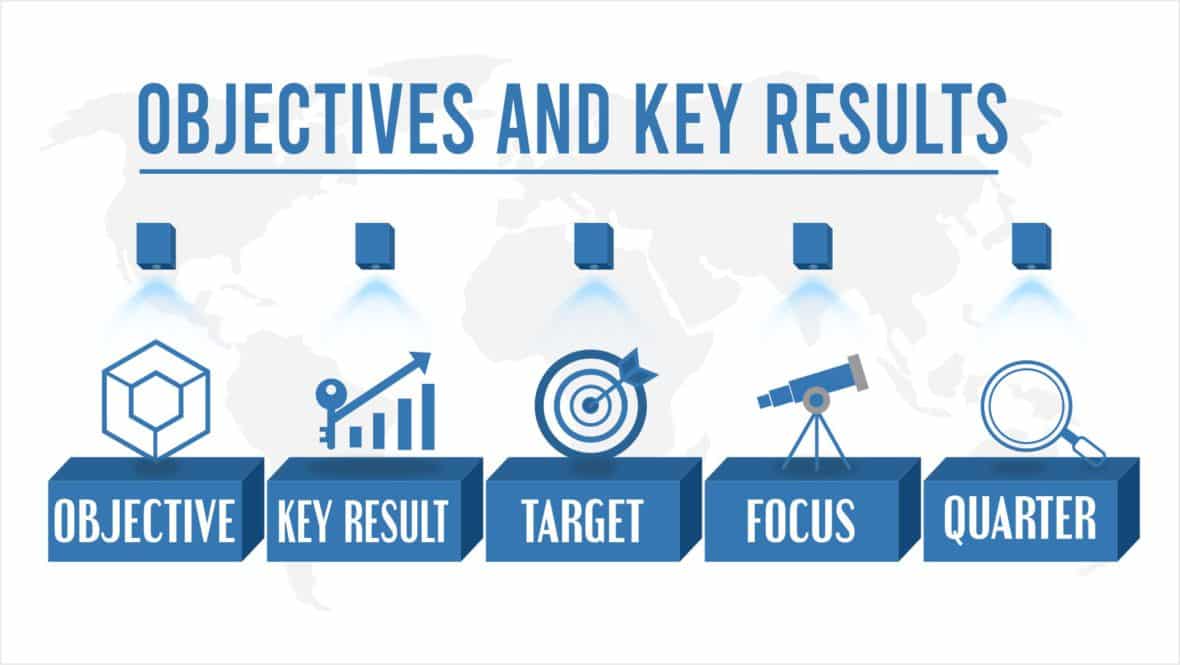
Welcome to our comprehensive guide on demystifying OKRs, a goal-setting framework that can boost performance and drive organisational success. We will discuss OKRs in this blog post, including their benefits and how they can be used to align individual and team goals with the organisation’s objectives.
Understanding OKRs and their Benefits
OKR stands for Objectives and Key Results. OKRs are a goal-setting framework that helps align individual and team goals with the organisation’s overall objectives.
Benefits of using OKRs include:
- Increased focus
- Improved alignment
- Enhanced transparency
OKRs provide a clear roadmap for achieving objectives and measuring progress. They promote a culture of continuous learning and improvement.
Setting Effective Goals with OKRs
When it comes to setting goals with OKRs, there are several factors to consider ensuring their effectiveness:
- Specific: The goals should be clearly defined and clear, leaving no room for ambiguity.
- Measurable: Establishing metrics or critical results that can be measured to track progress and success is crucial.
- Achievable: While the goals should be challenging, they should also be feasible and within reach.
- Relevant: The goals should align with the organisation’s objectives and contribute to its success.
- Time-bound: Setting a timeframe or deadline for achieving the goals helps create a sense of urgency and focus.
Furthermore, setting OKRs requires collaboration and input from all levels of the organisation. Different teams and individuals should come together to define their objectives and key results in alignment with the overall organisational goals. It is also essential to regularly review and update the OKRs to ensure they remain relevant and aligned with changing priorities.
Aligning Teams and Individuals with OKRs
OKRs facilitate the convergence of individual and team endeavours towards shared goals. Regular communication and feedback are essential for alignment. OKRs promote cross-functional collaboration and break down silos. The alignment of individual OKRs with team and organizational goals is crucial. Managers play a crucial role in aligning team and personal OKRs.
Measuring and Tracking OKR Progress
Key Results provide measurable indicators of progress towards objectives. Regularly track and update Key Results to monitor progress.
OKRs should be transparent and accessible to all team members. Use tools and software to simplify tracking and visualisation of OKR progress.
Celebrate milestones and achievements along the way.
Driving Accountability and Performance through OKRs
OKRs create a culture of accountability by setting clear expectations and measuring performance.
Regular check-ins and progress updates help ensure accountability by providing opportunities for individuals and teams to review their progress and make any necessary adjustments.
OKRs foster a sense of ownership and personal responsibility, as individuals are encouraged to take ownership of their goals and actively work towards achieving them.
Recognising and rewarding individuals and teams that achieve their OKRs further reinforces the importance of accountability and performance.
Additionally, OKRs can be used as a basis for performance evaluations and feedback, providing a clear framework for evaluating individual and team performance.
Best Practices for Implementing OKRs
When implementing OKRs, it’s essential to follow these best practices to ensure success:
- Start with a pilot group: Introduce OKRs to small employees or teams to test and refine the process before scaling it up.
- Training and resources: Educate employees on the concepts and best practices of OKRs through training sessions and provide resources such as guides and templates.
- Create a supportive culture: Foster a culture that values transparency, learning, and continuous improvement, where employees are encouraged to set ambitious goals and learn from their progress.
- Regularly communicate the purpose and benefits: Continuously communicate the purpose and benefits of OKRs to all employees, ensuring they understand how OKRs contribute to the organisation’s success.
- Continuously evaluate and adapt: Collect feedback from employees and assess the effectiveness of the OKR process. Adapt and make improvements based on lessons learned to enhance the implementation.

Conclusion
In conclusion, OKRs provide a robust framework for boosting organisational goal-setting and performance. By aligning individual and team goals with the organisation’s overall objectives, OKRs increase focus, improve alignment, and enhance transparency. The SMART criteria help set practical yet challenging purposes, and regular reviews and updates keep OKRs relevant and aligned with changing priorities.
OKRs also play a crucial role in aligning teams and individuals, promoting cross-functional collaboration, and breaking down silos. By providing measurable indicators of progress, Key Results enable effective tracking and monitoring of OKR progress. Accountability and performance are driven through clear expectations, regular check-ins, and a sense of ownership and personal responsibility.
To succeed with OKRs, start with a small group, train them, create a supportive culture, and often communicate about the purpose and benefits of OKRs.By continuously evaluating and adapting the OKR process based on feedback and lessons learned, organisations can harness the full potential of OKRs to boost goal-setting and performance.




